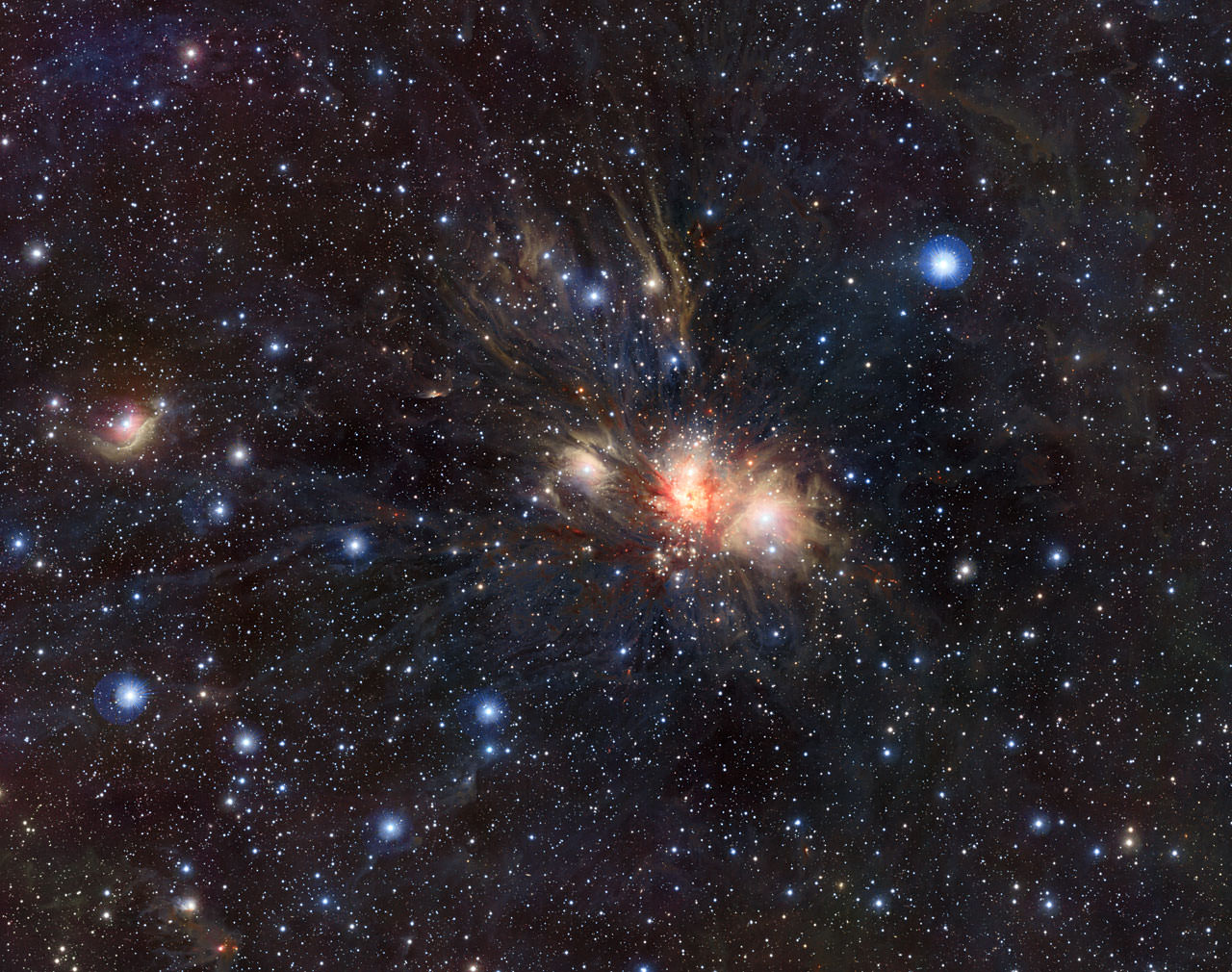[/caption]
What a gorgeous new infrared image of the region within the Monoceros (Unicorn) constellation taken from ESO’s Paranal Observatory in northern Chile with the amazing VISTA: the Visible and Infrared Survey Telescope for Astronomy. This telescope has a huge field of view, a large mirror and a very sensitive camera and has been churning out image after fantastic image. In this one, VISTA is able to penetrates the dark curtain of cosmic dust and reveals in astonishing detail the folds, loops and filaments sculpted from the dusty interstellar matter by intense particle winds and the radiation emitted by hot young stars.
“When I first saw this image I just said ‘Wow!’” said Jim Emerson, of Queen Mary, University of London and leader of the VISTA consortium. “I was amazed to see all the dust streamers so clearly around the Monoceros R2 cluster, as well as the jets from highly embedded young stellar objects. There is such a great wealth of exciting detail revealed in these VISTA images.”
It shows an active stellar nursery hidden inside a massive dark cloud rich in molecules and dust. Although the Unicorn appears close in the sky to the more familiar Orion Nebula it is actually almost twice as far from Earth, at a distance of about 2,700 light-years.
The width of VISTA’s field of view is equivalent to about 80 light-years at this distance. Since the dust is largely transparent at infrared wavelengths, many young stars that cannot be seen in visible-light images become apparent. The most massive of these stars are less than ten million years old.
In visible light a grouping of massive hot stars creates a beautiful collection of reflection nebulae where the bluish starlight is scattered from parts of the dark, foggy outer layers of the molecular cloud. However, most of the new-born massive stars remain hidden as the thick interstellar dust strongly absorbs their ultraviolet and visible light.
This new image was created from exposures taken in three different parts of the near-infrared spectrum. In molecular clouds like Monoceros R2, the low temperatures and relatively high densities allow molecules to form, such as hydrogen, which under certain conditions emit strongly in the near infrared. Many of the pink and red structures that appear in the VISTA image are probably the glows from molecular hydrogen in outflows from young stars.
Read more about this image at the ESO website.

